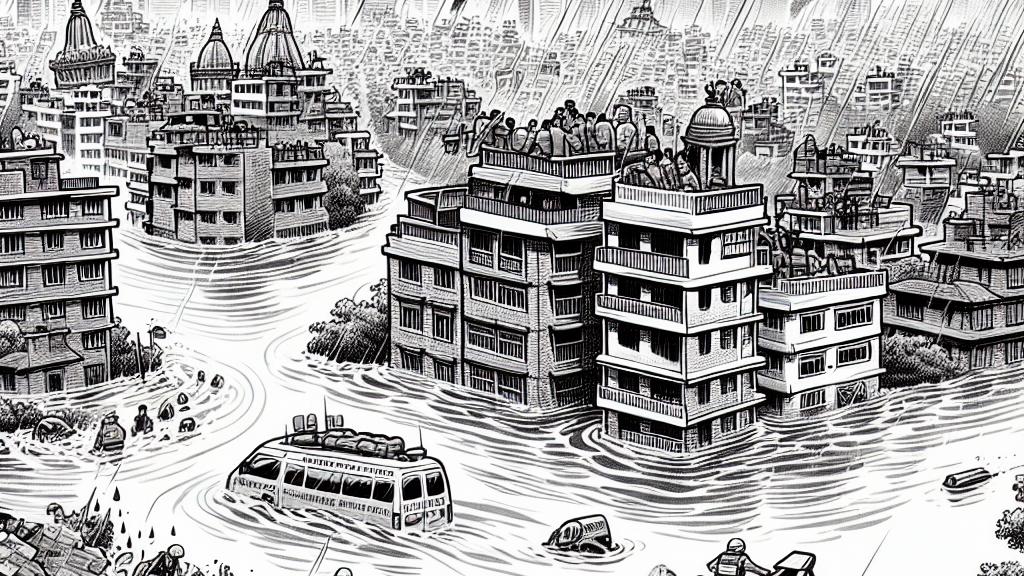Tragic Consequences of Nepal's Monsoon Floods
Overview
- Nepal has been struck by devastating monsoon floods and landslides, resulting in at least 66 confirmed deaths.
- Heartbreakingly, six young football players from the national academy are among the victims, highlighting the personal toll of this disaster.
- Ongoing rescue efforts face challenges, as numerous individuals remain missing, compounded by adverse weather conditions.

Recent Floods in Nepal
In Kathmandu, Nepal, an alarming disaster unfolded as relentless rainfall triggered catastrophic floods, leading to at least 66 fatalities confirmed by September 28, 2024. The torrential downpours began on September 27, causing the Bagmati River to surge dangerously over its banks. Consequently, neighborhoods were submerged, and normal activities came to a standstill for millions of residents in the capital. Authorities have reported a staggering 69 people still missing, alongside around 60 injured as emergency response teams work feverishly to rescue those affected. The tally of missing individuals continues to rise, underscoring the gravity of the situation.
Impact on Local Communities
The human impact of these floods is profound and heartbreaking. Among the victims are six talented football players from the Nepali Football Association’s academy, tragically caught in a landslide as they sought refuge. Their loss reverberates across the nation, reminding us of the harsh realities faced by communities during natural disasters. As brave rescue teams utilize helicopters and inflatable boats to reach those stranded on rooftops, many areas remain inaccessible due to blocked roads. Such obstacles create a pressing need for urgent aid as the government ramps up recovery efforts. Yet, the continuing threat of rainfall exacerbates the challenges faced by both rescuers and victims alike.
Ongoing Challenges Ahead
With rain set to persist in the coming days, the urgency for understanding and addressing Nepal's vulnerability to natural disasters cannot be overstated. The Koshi and Gandak rivers are overflowing, elevating the risk not only for Nepali communities but also for nearby regions in India. Each monsoon season brings its own wave of destruction, resulting in thousands of lives affected and infrastructure severely damaged. Therefore, Nepal must re-evaluate its disaster preparedness strategies, focusing on upgrading infrastructure, strengthening emergency response systems, and enhancing community resilience. Emphasis on effective communication and local education around disaster safety is critical in ensuring that vulnerable populations are better equipped to face future calamities. The specter of climate change looms large, making it imperative to adopt comprehensive measures that will protect both lives and livelihoods in this beautiful yet treacherous mountainous terrain.

Loading...